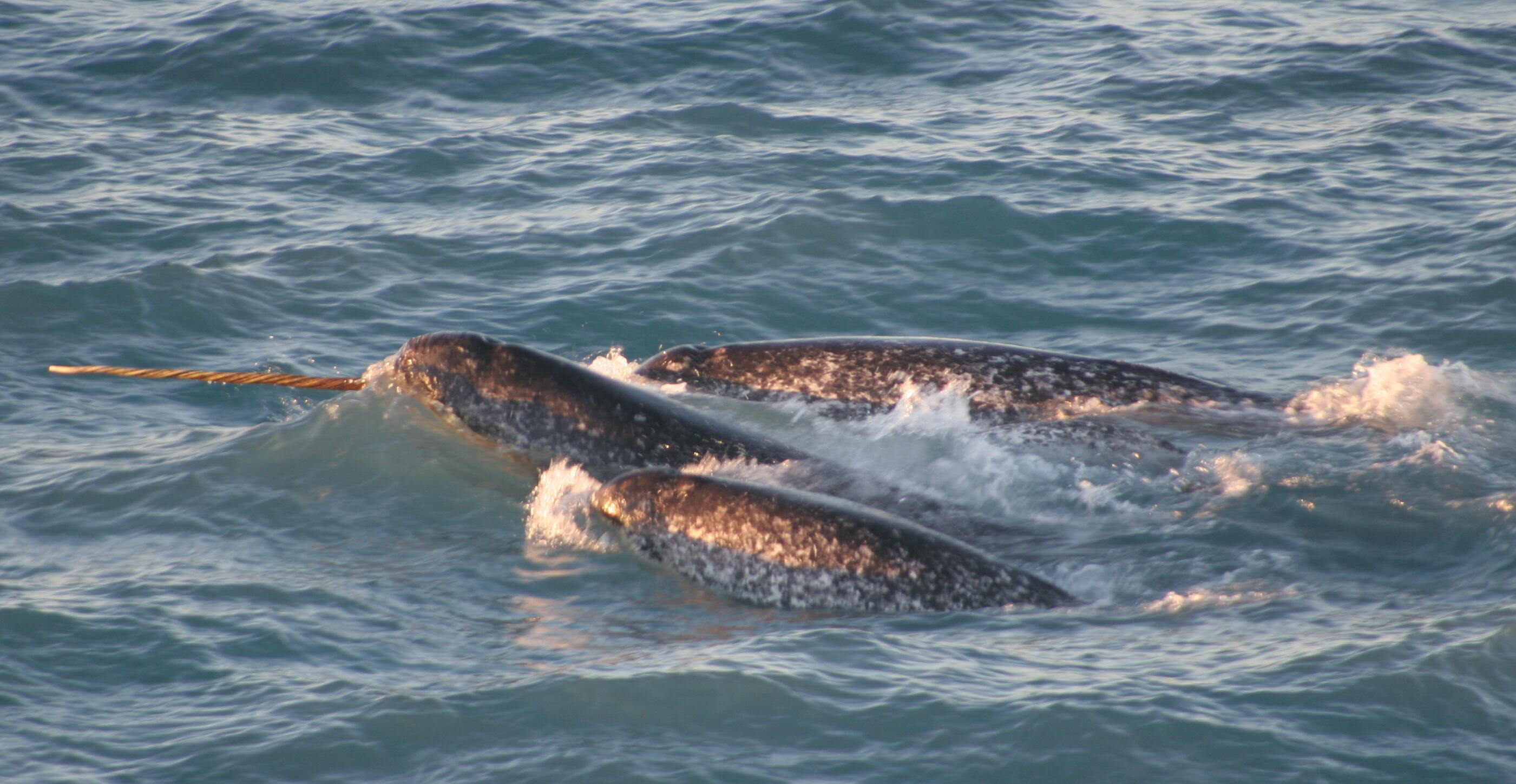Only a ban on hunting will stop narwhals’ disappearance from eastern Greenland, scientists warn
Hunting is speeding a decline of narwhals in eastern Greenland brought on by warming waters and industrial noise.

Scientists are calling for a temporary halt to narwhal hunting in the waters off eastern Greenland after recording population declines of more than 70 percent during a 10-year period starting in 2008.
The decline is occurring as narwhals migrate further north to escape warming water and the arrival of competing species, as well as to find areas where sea ice remains abundant, according to a report published in October by NAMMCO, an outfit that monitors the status of maritime mammals in the North Atlantic.
Ongoing scientific concern that too many narwhals in eastern Greenland were being caught as the population there was declining led NAMMCO, in 2018, to establish a group of specialists to look into how human activity and global warming were affecting the species in the region, and to present recommendations for how to ensure that hunting could continue to be permitted.
The group’s findings, presented in September, were compiled using scientific data as well as the observation of fishermen and hunters in eastern Greenland. It noted that the decline coincided with the establishment of a halibut fishery in eastern Greenland, and suggested that noise from fishing boats had driven many narwhals away.
[Narwhals’ natural threat response could backfire as they encounter more human activity]
The report also found that while the number of hunters in eastern Greenland has remained the same, the number of hunters with boats had increased. And it expressed concern that not all catches were being reported.
“An increase in the numbers of skiffs with outboard engines and a reduction of glaciers due to climate warming have resulted in narwhals changing distribution, so that that they are now rare in some of the previous hunting grounds,” the report stated.
Other types of vessels, such as cruise ships, may also be playing a role, residents say. They confirmed that they were now seeing narwhals in different locations, but said their numbers overall appeared to remain the same.
NAMMCO’s recommendation to temporarily end hunting comes after Greenlandic fishing authorities added an additional six narwhals to the 2019 quota in October, when the original limit of 50 in eastern Greenland had been reached.
[More Arctic ship traffic could affect the region’s marine mammals]
Earlier this month, fishing authorities proposed setting the 2020 quota for the three management areas off the eastern coast again at 50 before reducing the limit by 10 each year until 2023, and eliminating hunting entirely in one management area starting in 2022.
As part of their studies, the scientists also looked into the effect that loud noises, similar to those produced during seismic exploration for the oil industry and shipping, had on narwhals. They found that even though the experiments involved lower-intensity sounds than those created by industrial activity, narwhals still tried to escape by swimming to the surface or to a different area, while also producing fewer of the sounds associated with feeding.